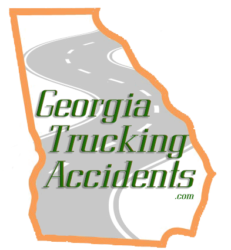Underride Truck Accident Lawyers In Georgia
The mere thought of riding in a passenger car headed toward the side of a tractor-trailer is fear inducing, nauseating and downright scary. The Insurance Institute for Highway Safety (IIHS) recently examined the need for under guards to prevent underride. Watching one video of a test is all of the evidence you will need to be convinced that every trailer must be outfitted with a protective device that prevents underrides from the sides and rear of the trailer. While technological advancements have been made, few serious strides are being made to stop these horrible accidents from occurring ever again.
The thought that a person instead of a crash test dummy could be driving a car in the latest testing from the IIHS examining the need for underride guards on a large truck is practically grotesque. The IIHS video shows a typical family-style sedan driving at the moderate speed of 35 miles per hour directly toward the side of a big rig. An aerodynamic wing hangs from the side of the trailer. This particular design will not prevent a car from underriding the trailer. As the car is moments from impact, the hood of the car fits under the truck neatly. The car does not stop until the windshield slams into the underside of the trailer. The car continues under the truck as the windshield is crushed and the driver is trapped between the seat and the side of the commercial vehicle. The sedan comes to an abrupt stop with a jolt, but it is too late, the damage has already been done. The driver and the front seat passenger are most likely killed instantly from the violent collision.
The trucking industry has not adapted side guards to protect underriding. The industry adopted rear guards almost two decades ago. The design and composition of the rear guards proved ineffective at stopping a car from going under a truck from behind. The rear guards frequently crumbled and tore away depending upon the violence of the impact. However, the IIHS has tested design for a guard who might prevent underride accidents.
Before the guards become mandatory safety measures on large trucks, motorists face the gruesome possibility that they could go under a semi-trailer. For an underride accident to occur from the side, that would mean the tractor-trailer crossed in front of another motorist. Truckers owe a duty of care to every other person sharing the road with them. Consequently, truck drivers must do what they can to prevent crossing in front of another car. That means truck drivers must allow for sufficient time and space to enter traffic or to go across traffic at an intersection.
Similarly, rear underrides can occur when a truck stops short causing the motorist to slam into the rear of the truck. A motorist can underride a truck from behind if the truck’s brakes lights are inoperational or the mudflaps fail to prevent debris from spraying a trailer vehicle. Such a crash can certainly cause a fatality and can also cause serious, life-threatening injuries to the driver and passengers of a passenger car. The driver and passenger, if they survived a rear-end crash, could suffer grievous bodily injuries such as:
- Amputation,
- Paralysis,
- Coma,
- Broken bones,
- Concussion,
- Back injuries,
- Soft tissue injury, and
- Contusions and Lacerations.
Put Our Law Firm’s Over 33 Years Of Legal Experience To Work For Your Case!
The time you have to legally receive compensation is limited.
Sources:

